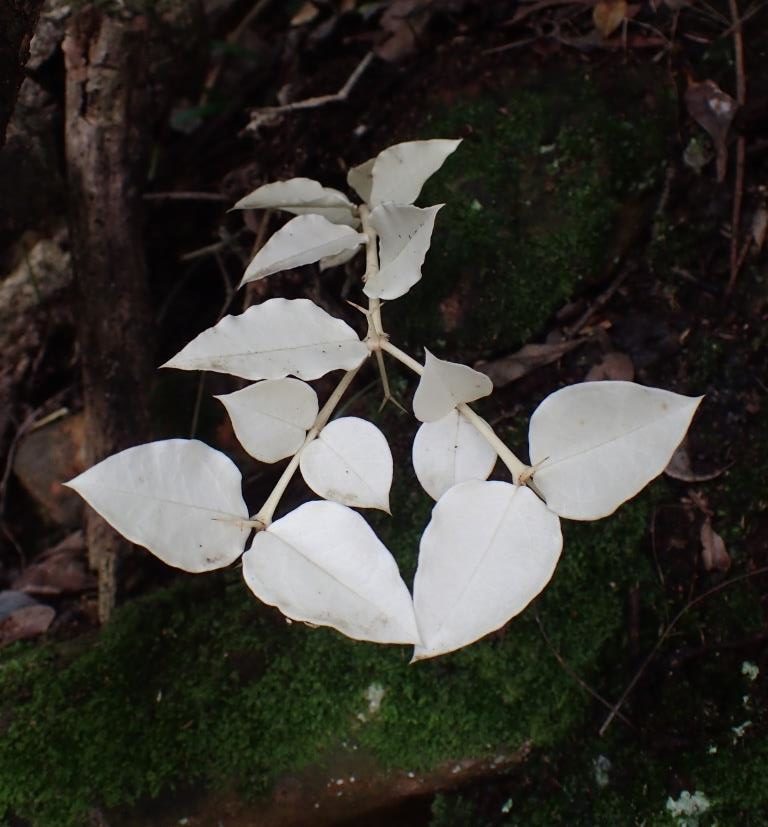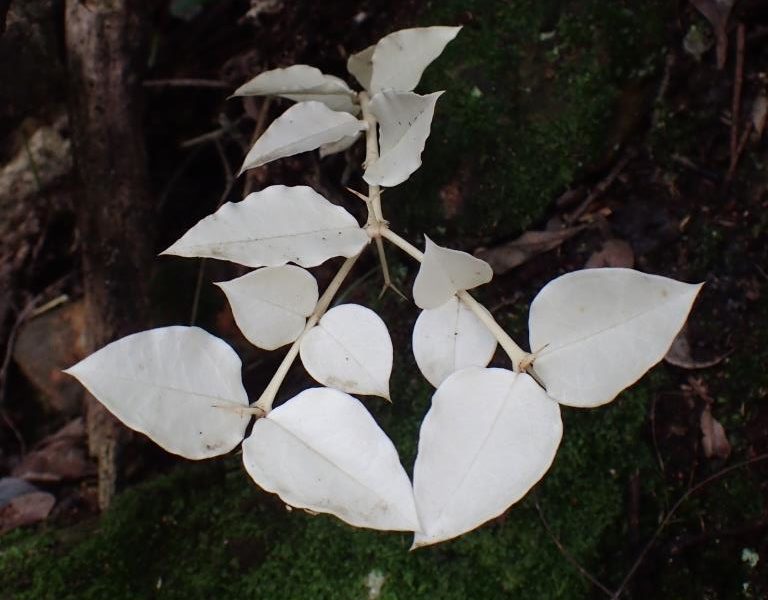
Albino Carissa bispinosa
Albinism, which is the absence of pigment is a well-recognized phenomenon in humans and animals. However, it also occurs in plants even though it may not be so well known. This means the plant has a “partial or complete loss of chlorophyll pigments and incomplete differentiation of chloroplast membranes. Albinism in plants interferes with photosynthesis, which can reduce survivability.” *
In the last few weeks photos about such a plant in the Kruger National Park highlighted this phenomenon. Yesterday an albino Carissa bispinosa (Forest Num-Num) plant was spotted in a forest on Mountainlands. Seeing such a plant up close growing in a forest is quite extraordinary as the whiteness stands in stark contrast to the dark background giving it a ghostly appearance.
Apparently few albino plants make it past the seedling stage, but you get the oddballs that have figured out ways to survive. The Mountainlands Num-Num seems to have done just that. Although small – about 30 cm long, it grows about 40 cm apart from one with chlorophyll. The albino may appear to be an independent plant, but it is likely that it is a root sprout that has undergone a mutation. And with no ability to produce chlorophyll it survives on the nutrition it gains through the root system of the close by green Num-Num plant which may also be its parent.
But not all albino plants are viewed as leeches. Research in studies of redwoods where albinism also occurs, has suggested that the albino trees may be absorbing heavy metals and other toxins for the parent tree.
*https://en.wikipedia.org/wiki/Albinism

